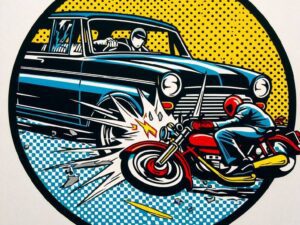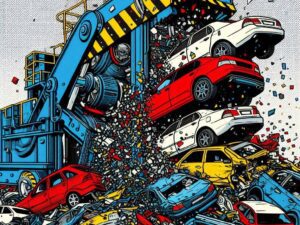Prices Rise For Second-Hand Vehicles

Motorists already reeling from fuel shortages and potential performance issues with E10 petrol have just received a fresh alert from the motor trade industry about a global shortage of new vehicles, the cost of buying used cars is now increasing at “unprecedented rates” normally only seen in the housing market and with certain rare classic cars.
The evidence for this comes from the motoring organisation’s own statistics, which show the forecourt price of some of the most popular pre-owned cars has jumped by as much as 57% in just two years.
Motor trade dealer Peter Smyth, director of family-owned Swansway Car Dealers, explained that the slowing down of new car supplies had resulted in “nearly-new cars” in particular becoming a sought-after product.
According to Mr Smyth, luxury cars (Land Rovers and Audi Q7s) were definitely “selling the fastest”. But one problem for the motor trade will be that even though selling fewer cars at higher prices is undoubtedly good business, dealers will find it harder to replace any stock they sell.
Looking to the immediate future, Mr Smyth anticipated trading prices would stay at these higher levels for somewhere between six months and a year. This is because car manufacturers continue to report material shortages – most notably, supplies of computer chips.
When these supply-side shortages begin to ease, Smyth believes it will be luxury cars rather than low-end vehicles which will be first to reappear: “They are going to put the [first] chips in the high-value cars where they make the most margin,” he said.

Commenting about new and used cars on behalf of the Society of Motor Manufacturers and Traders (SMMT), chief executive Mike Hawes accepted that a strong, healthy used-car market was essential because “strong residual values supported new car transactions”.
Nevertheless, he also considered it “critical we have a healthy new car market,” explaining the effect would be to “help accelerate fleet renewal by allowing motorists to replace older, less efficient vehicles with the latest, cleanest models.”
Meanwhile, AA Cars chief executive James Fairclough observed that some popular cars were continuing to increase in value “even as they sit on the driveway”.
During the Covid-19 pandemic, parked on the driveway was just about all vehicles got to do. But after the initial relaxing of lockdown rules in June 2020, it freed up demand in the new car market which had been previously stifled by the stay and work from home rules. This build up in demand created artificial peaks, rather like panic buying in shops, making the present crisis even more acute.
Many motor trade dealers believe motorists can still secure a good deal by shopping around, however, the car market seems set for a phase of unpredictability as the new companies like ‘We Buy Any Car’, ‘Cazoo’ and ‘Cinch’ upsetting the status quo offering different ways to purchase vehicles.
Motor Industry figures support the notion that the lack of new cars has also had the knock-on effect of slashing stocks of second-hand cars normally acquired through trade-ins.
Though there are no official reports yet, your motor insurance policy premium is, in part, based on the value of your vehicle. Which raises the question, will this unprecedented rise in used-car values affect your present policy in any way?
Something similar recently happened with declared annual mileage, where some stay-at-home pandemic motorists received a cheque from their private and motor trade insurance brokers because of the reduction in their on-the-road risk factor.






